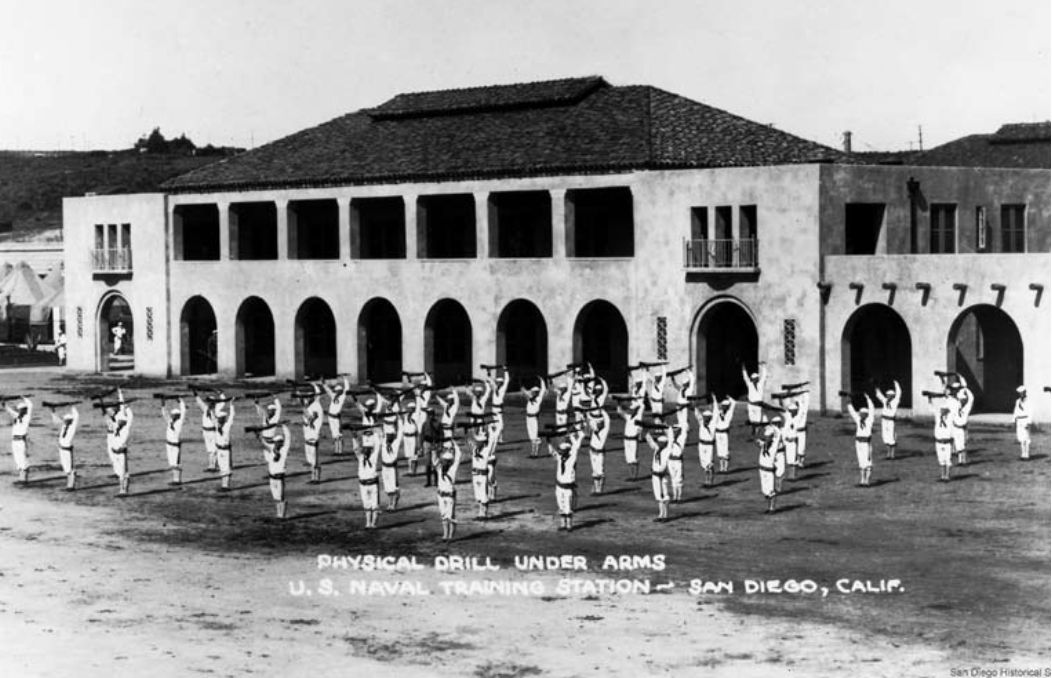The Liberty Station you know and love: walls full of history and memories past, present and future.
You may know that Liberty Station used to be a Naval Training facility, but did you know that it was Franklin D. Roosevelt himself that saw this area’s potential and future?
In 1915, Roosevelt was the Assistant Secretary of the Navy. He surveyed San Diego as a possible site for the next Naval Training Station, which was eventually made possible by the donation of land by some of San Diego’s prominent families and with the help of Congressman William Kettner. This would help shape San Diego’s culture and the cause for freedom here and abroad. Construction began in 1921 and some of the first buildings included the barracks, the dispensary, a fire station and four schools.
During the war years of 1941-1945, the Naval Training Station continued to grow to accommodate the need for sailors. In the peak of WW2, the population reached 33,000! The size of the Station tripled with a total of 41 schools, churches, medical units and more. San Diego was home to more than 1/6th of the Navy’s fleet and our training center played a key strategic role throughout the 20th century.

In 1993, the U.S. Navy announced its intention to close the NTC under terms of the Base Closure and Realignment Act of 1990. At that time, the NTC consisted of over three hundred buildings occupying almost 550 acres of land. The City of San Diego, led by Mayor Susan Golding, responded by entering into a master lease agreement with the Navy in 1995 to ensure that activity would continue on the base. The city subleased buildings to film companies, nonprofit organizations, city departments, and small businesses. It also began negotiating with the Navy to transfer the bulk of the base to city ownership. On April 30, 1997 all active military use of the base ended, but retained some land for about 500 units of military housing.
San Diego is full of rich history and incredible architecture. Liberty Station is just one of those masterpieces. The commission to build Liberty Station began at the same time as the California Exposition in Balboa Park and you can see the influence of the Spanish Colonial Revival in the buildings. Now, with 125 acres of parks, open spaces, a boat channel, shopping, restaurants, a 28 acre arts and culture district, the nine-hole Sail Ho Golf Club, hotels, schools and around 350 families residing here, you could say that Liberty Station is still vibrant with culture and history in the making.
Our hope is that Liberty Station would continue to draw more people to experience just a small piece of San Diego’s great history.